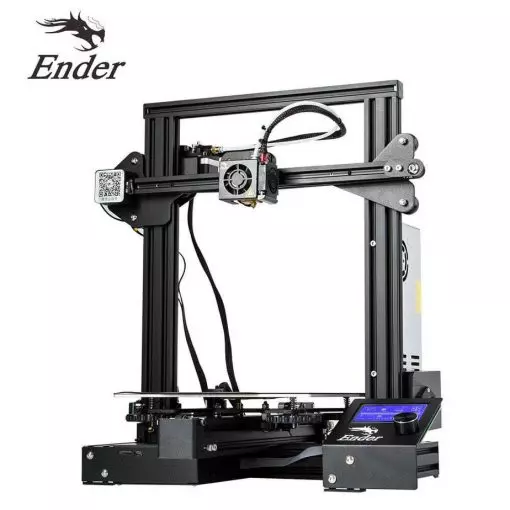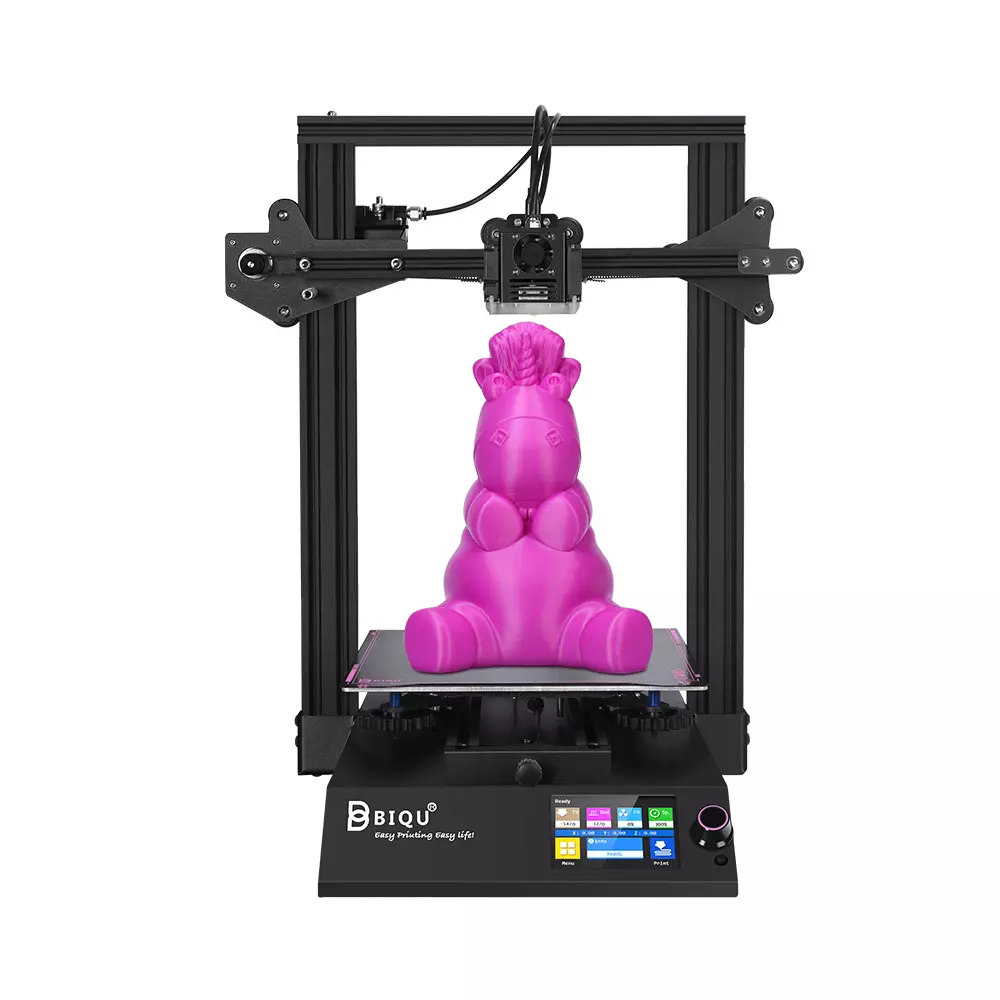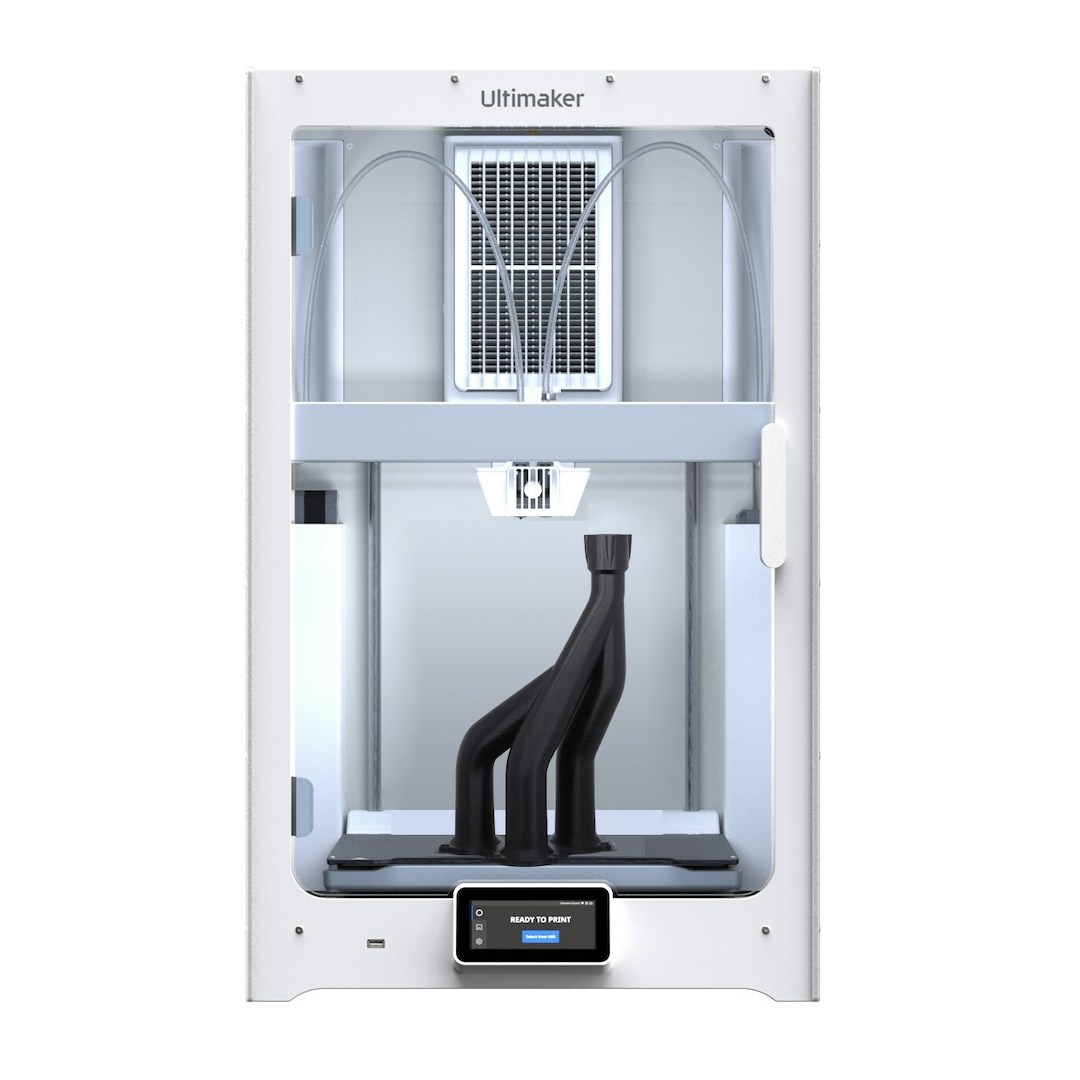Compare Ender 3 vs BIQU B1 vs S7
Comparison between the best 3D printers
Choose the best 3D printer at the best price. The cheapest 3D printers are here.
Buy a 3D printer here with 3D Fila.
 |
 |
 |
|
| Model | Ender 3[BUY Ender 3] |
BIQU B1 |
S7 |
| Printing Material | Filament | Filament | Filament |
| Estimated price | $210,00 | $269,00 | $8300,00 |
| Fabricante | Creality 3D | BigTreeTech | Ultimaker |
| Release Year | 2018 | 2020 | 2022 |
| Print Volume [mm] | 220x220x250 | 235x235x270 | 240x330x300 |
| Printer Size [mm] | 440x440x465 | 412x402x492 | 585x495x800 |
| Weight [kg] | 6,62 | 8,00 | 29 |
| Power Loss Recovery | NO | YES | YES |
| Enclosed printer | NO | NO | NO |
| Bed Leveling | Manual | Manual | Automatic |
| Filament End Sensor | NO | YES | YES |
| Bed type | Heated | Heated | Heated |
| Power supply system | Bowden | Bowden | Bowden |
| Standard nozzle | 0,4 | 0,4 | 0,4 |
| Maximum Nozzle Temperature [°C] | 255 | 250 | 280 |
| Maximum Bed Temperature [°C] | 110 | 100 | 120 |
| Maximum printing speed [mm/s] | 180 | 100 | 180 |
| Filament holder | YES | YES | YES |
| Camera for supervision | NO | NO | YES |
| Recommended filaments | PLA, TPU, ABS, PETG | PLA, TPU, ABS, PETG | PLA, ABS, PETG, PC, Nylon, Tritan, PP |
| Recommended slicers | Cura, Simplify, Slic3r | Cura, Simplify, Slic3r | Cura |
| Maximum Resolution [mm] | 0,1 | 0,1 | 0,1 |
| Processor | 8 bits | 32 Bits BTT SKR V 1.4 | |
| Display | Mono | Touchscreen TFT 3,5'' | Display touchscreen 4,7'' |
| Power Supply | 24V / 270W | 24V / 360W | 500 W |
| Connectivity | SD / USB | SD / USB | USB / Wi-Fi |
| Operating systems | Windows, Mac, Linux | Windows, Mac, Linux | Windows, Mac, Linux |
| Date of registration in the system | 2021-04-13 | 2021-04-14 | 2023-01-28 |
| Release date | 2018 | 2020 | 2022 |
| Extra features | The Ender 3 V1 is a DIY assembly 3D printer, a sales leader since 2017, standing out for its cost-benefit. With a wide printing capacity, it has a CNC machined structure for precision and stability. It offers high-precision prints with low noise, thanks to its innovative V-profile and pulleys. It has a self-adhesive magnetic platform for easy removal of models and excellent adhesion. The Ender 3 heats up quickly, reaching 100°C in 5 minutes, ideal for agile prints. It includes protection against power failures, allowing you to resume printing after interruptions, saving time and material. | The BIQU B1 is an advanced 3D printer with a silent 32-bit BTT SKR V1.4 motherboard and ARM Cortex-M3 CPU, offering DIY interfaces (I2C, SPI, WiFi) and dual Z-axis. Its dual BTT B1 TFT35 V3.0 operating system allows real-time monitoring and multiple printing modes, including G-code visualization effects. It stands out for its BIQU SSS (Super Spring Steel), ensuring easy model adhesion and simplified removal, with the possibility of using it on both sides. It includes a filament sensor, automatically pausing printing in case of filament breakage. The multicolored RGB lights integrated into the hotend allow you to view the printing status even at night. Additional notes include the need for a BIQU-specific Type-C cable and extra interfaces for smart filament sensor and BL Touch. | The UltiMaker S7 printer features a series of technological innovations to enhance 3D printing. It incorporates a flexible, magnetic build plate with PEI coating, promoting better adhesion and easier part removal. Its new inductive sensor significantly improves bed leveling, ensuring perpendicular and accurate prints. In addition, the S7 has a higher quality camera for remote monitoring, an integrated air filter, and uses a unique glass door to maintain a constant temperature in the print chamber. The machine is also compatible with the expansion kit for metal printing. |
| Support for multiple colors and materials (AMS and CFS) | NO | NO | NO |
Notes * |
|||
| Cost-benefit | 6 / 10 | 7 / 10 | 1 / 10 |
| Hardware | 0.5 / 10 | 2 / 10 | 4.2 / 10 |
| Screen | . | . | . |
| Print volume | 3 / 10 | 3 / 10 | 4 / 10 |
| Performance | 1 / 10 | 1 / 10 | 1 / 10 |
| [BUY Ender 3] |
Conclusion |
| ### Conclusion When comparing the Ender 3, BIQU B1, and Ultimaker S7, several factors, including price, features, and overall performance, play a crucial role in determining the best entry-level 3D printer for specific needs. The **Ender 3** stands out as the most cost-effective option, providing excellent value with its robust construction and decent print volume. It's particularly appealing for beginners due to its simplicity and the ease of obtaining replacement parts. However, it has limitations, such as the absence of power loss recovery and manual bed leveling, which can make printing less forgiving for inexperienced users. The **BIQU B1** offers advanced features, such as automatic filament detection and a more sophisticated motherboard, giving it an edge in reliability and user experience. Its slightly larger print volume also adds to its versatility, making it a good choice for those who want a step up from basic models without significantly increasing their investment. On the high end, the **Ultimaker S7** boasts professional-grade features such as automatic bed leveling and superior print monitoring capabilities. While it supports a wider variety of materials and offers higher temperature capabilities, it comes at a substantially higher price point. This 3D printer is best suited for professionals or enthusiasts who require advanced functionalities and are willing to invest more for high-quality results. In summary, if budget is a top priority and you are looking for an entry point into 3D printing, the Ender 3 is a solid choice. If you desire more advanced features and greater reliability without breaking the bank, the BIQU B1 is an excellent middle-ground option. For those who demand the best technology available and have the financial resources, the Ultimaker S7 will meet all professional needs. Ultimately, the choice should align with your specific requirements, budget, and intended use of the 3D printer. |

